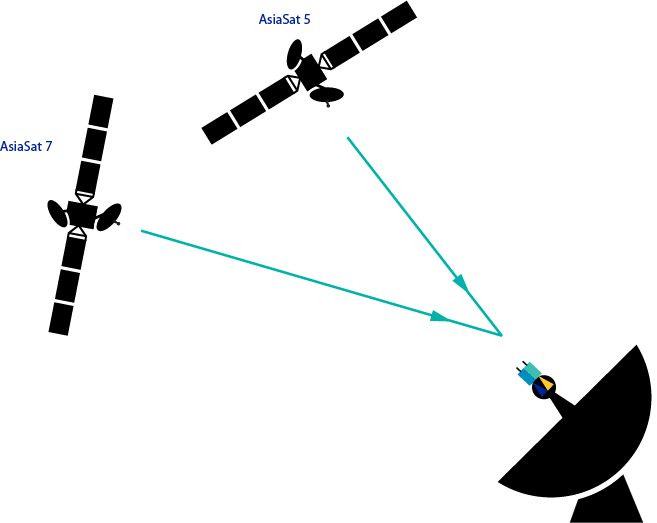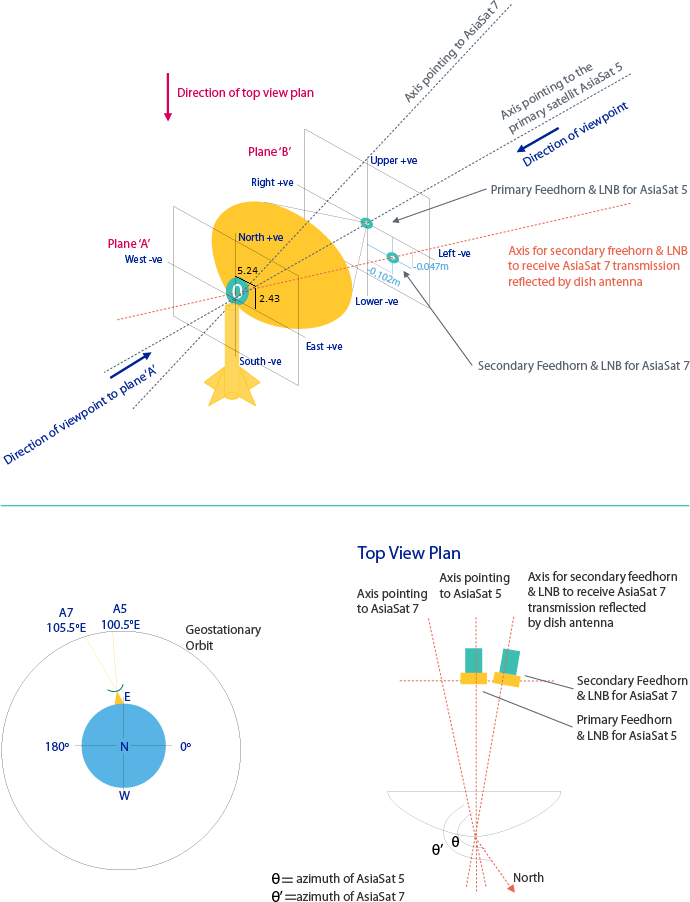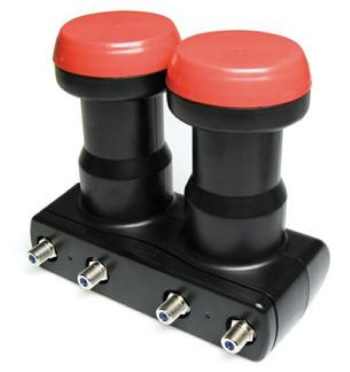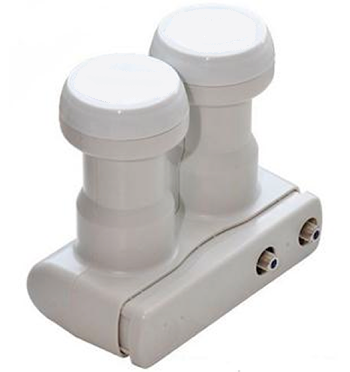Concept
Receive AsiaSat 7 at 105.5°E and AsiaSat 5 at 100.5°E with 1 TVRO dish

Benefits to Broadcasters
- Combined audience penetration of AsiaSat 7 and AsiaSat 5
- 800+M TV households across Asia Pacific
- Combined channel neighbourhood of AsiaSat 7 and AsiaSat 5
- Premier television and radio channels
- Multilingual bouquets of South Asian, Middle Eastern, European, Chinese and international programming
- Inter-satellite back up
- Service continuity made possible by second feeds installed at receiving sites
Benefits to Cable Headends / Receive Sites
- Increase channel offerings through access to multiple broadcast platforms via a single TVRO
- Expand subscriber base through enriching programming packages
- Increase revenue through enlarging subscriber base
- Low implementation cost to expand service packages to subscribers/viewers
- Allow service continuity with second feeds installed at receiving sites
How to Retrofit Existing Single Feed TVRO?
Set Up Configuration

Steps
- Retrofit the existing C-band TVRO dish that has a single feed and LNBs pointing to either AsiaSat 7 or AsiaSat 5
- Install a secondary feed assembly and LNBs to the existing TVRO dish
- Connect the IF cable to the additional LNBs
- Align the secondary feed horn and optimise the additional feed position for best quality signal
- Rotate the secondary feed to get the right polarisation angle
- Once obtain the best C/N ratio, fix the LNBs at the selected position
- Installation of the secondary feed is complete when achieve the maximum signal levels of both satellites
Details of Aligning the Additional Feedhorn
To receive more than one satellite simultaneously using one dish antenna, you need to find out two additional angles to fix the supplementary feedhorn besides the Azimuth and Elevation angles of the primary satellite. They are the "Relative Separation Angle" and "Feed Offset Angle".
The relative separation angle is used to align the supplementary feedhorn on the transversely displaced feed point of the secondary satellite. Feed offset angle is used to find out the position of the supplementary feedhorn.
Antenna Alignment
Imagine that there are two planes, Plane 'A' and Plane 'B', along the antenna axis. Plane 'A' is at the back of the antenna and Plane 'B' is in front of the feedhorn. If AsiaSat 5 is the primary satellite, align the dish antenna with AsiaSat 5 first. Then find out the position of the secondary satellite (i.e. AsiaSat 7) on plane 'A' and the position of the secondary feedhorn on plane 'B'. Align the secondary feedhorn with the secondary axis by connecting these two points.
Example
To receive both AsiaSat 7 and AsiaSat 5 using a 2.4m dish antenna in Hong Kong, and assuming AsiaSat 5 is the primary satellite and AsiaSat 7 the secondary satellite, the relative separation angle will be
5.24° H
2.43° V
feed offset angle will be -0.102m H
-0.047m V
where H is horizontal direction and V is vertical direction

In the case of receiving two satellites with a single dish, the receiving gain for the secondary satellite will be lower than that of the primary satellite. In order to compensate this loss, a large antenna or signal booster may be needed.
Monoblocks are available these days to receive two different satellites at the same time, capable of receiving both V and H-pol. These monoblocks are mostly custom manufactured according to the separation of the targeted satellites. Two examples are:

